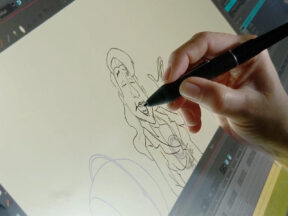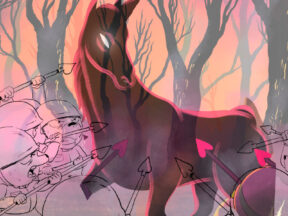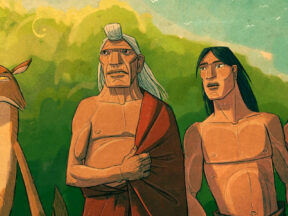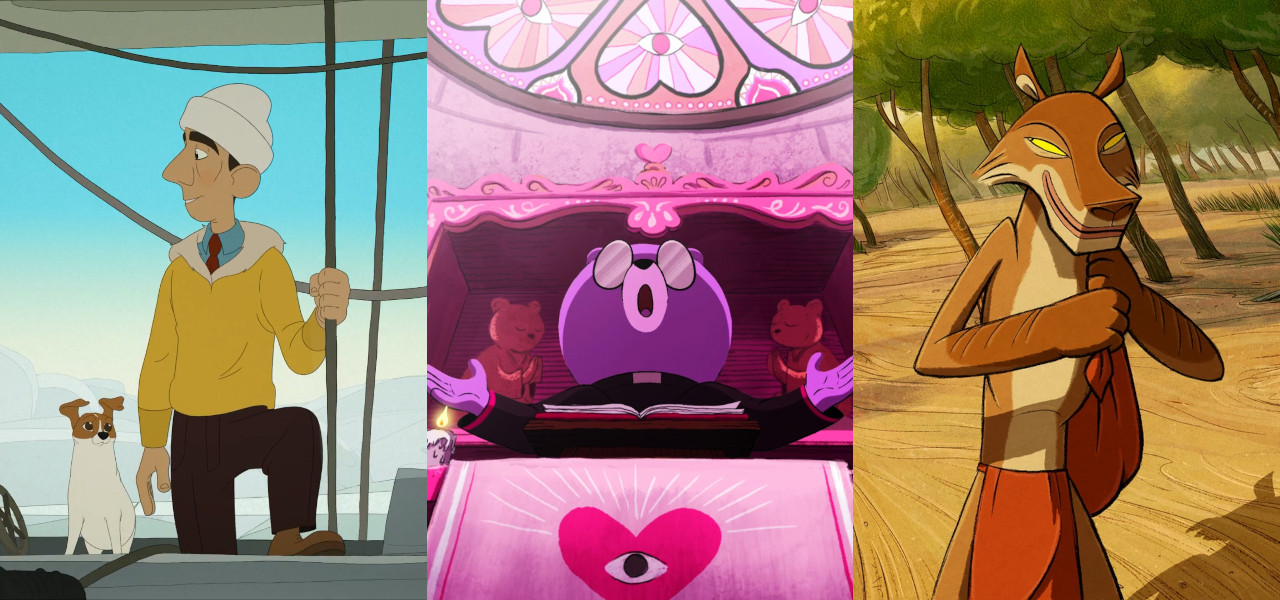
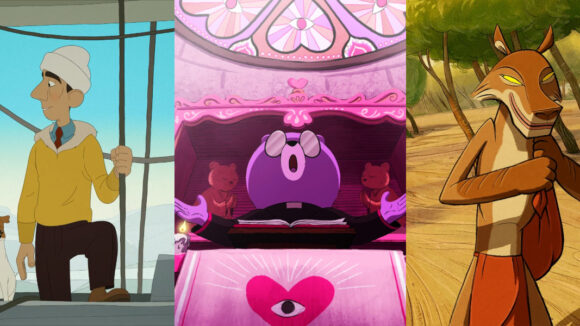
Three Of This Year’s Oscar-Qualified Directors Discuss The Enduring Appeal Of 2D Animation
Thirty-three films were submitted in this year’s contest for the best animated feature Academy Award. That’s a record-braking figure, but equally notable is the strong showing by 2d animated films in this year’s field.
Titles featuring exclusively or largely 2d hand-drawn animation include Suzume, They Shot the Piano Player, Titina, Unicorn Wars, Perlimps, My Love Affair with Marriage, The Peasants, The Boy and the Heron, Art College 1994, Ernest & Celestine: A Trip to Gibberitia, Robot Dreams, and The First Slam Dunk. It should also be noted that Hungary submitted the 2d animated feature Four Souls of Coyote to the international feature category.
Of the 33 films qualified for this year’s animated feature Oscar, nearly half heavily feature 2d animation or cg meant to look like 2d animation – think Spider-Man: Across the Spider-Verse or Teenage Mutant Nina Turtles: Mutant Mayhem. While cg may be the method of choice for many studios where profits set the bottom line, it’s clear that plenty of artists still prefer a traditional 2d aesthetic for telling their stories.
We spoke to the directors of three of this year’s (mostly) 2d Oscar hopefuls, Titina, Four Souls of Coyote, and Unicorn Wars, about choosing to make a hand-drawn feature in a cg-dominated industry and the challenges and joys of working in 2d animation.
Titina
Norwegian director Kajsa Næss’ debut feature finds warmth in visual simplicity. Titina tells the tale of the real-life Italian airship engineer Umberto Nobile and his expedition to the North Pole alongside frenemy Roald Amundsen and an intrepid canine companion, Titina. Through its perilous plot, which sails through both bustling 1920s cityscapes and the empty blue and white landscapes of the North Pole, Titina maintains its calming familiarity due to the classic nature of its art style.
“A lot of the inspiration came from classical 2d cel animation,” Næss told Cartoon Brew. “I find the traditional hand-painted look really beautiful. That’s why we wanted to go for a flat look with thin lines to reference cel animation. We also wanted to avoid too many shadows and fancy camera moves; that was a rule from the beginning of the film.”
Enforcing such restraints allowed Titina to develop its own sense of humor. “The film is shot straight on all the time to give it this deadpan feeling. The humor is not in cartoony animation. The humor and our support for the characters comes from recognizing yourself in the character,” explained Næss. “It’s classical human humor. We were also inspired by Wes Anderson, which relies on staging, framing, and timing rather than exaggerated movements.”
Titina’ style of comedy put significant pressure on the animators to express human emotion more subtly than what would be necessary for a more physical type of humor. Ness stressed the importance of “getting the animators to understand the tone and the feeling of how you want to tell the story.” By pulling back on the need for every movement to feel intensely expressive, the animators can find a version of the characters that feels more truthful. “They should walk like people, they should look like people, they should act like people,” said Næss. “We wanted quiet humor, which is hard to understand in the beginning; it’s quite Nordic.”
Næss finds 2d animation a valuable tool for helping the audience focus on the story. “You have restraints; you cannot move the camera all the time; you cannot change your location too many times; you can’t have 10,000 characters in the background. This makes the story feel close,” she explained. “I think it clearly affects storytelling. There’s a difference in storytelling between 2d and 3d, and I prefer the 2d storytelling.”
Unicorn Wars
Unicorn Wars, a Spanish anti-war allegory told through the lens of a conflict between teddy bears and unicorns, is a dynamically shot, ever-evolving epic. The film is drenched in horror, carrying forth a tone from its director’s previous work. Alberto Vásquez’s Birdboy: The Forgotten Children and Unicorn Wars delve into similar genres but on different budgets.
“There are quite a few differences between the two films, as the former was a very low-budget production and the latter a mid-budget production,” Vásquez told Cartoon Brew. “There are a lot of lessons I learned from the first film that I applied to the second, like not doing all the storyboarding myself or generally having more artists help me in all phases. Also, to have the animatic finished before production starts. It’s true that you make new mistakes all the time, so filmmaking is always a learning process.”
Unicorn Wars opens with a nightmare sequence that sees a unicorn’s mother devolve into a sludge monster from which the child must escape. The scene showcases a complexity of camera movement often unseen in hand-drawn animation. “In traditional animation, there is always a way to do what you want more easily. You can look for tricks or ways to imitate real camera movements from a drawing perspective much more intuitively,” Vásquez explained. “I frequently say that there is always a simpler way to represent something, that drawing is a language and a way of thinking, and that technical problems are solved by looking for solutions through drawing.”
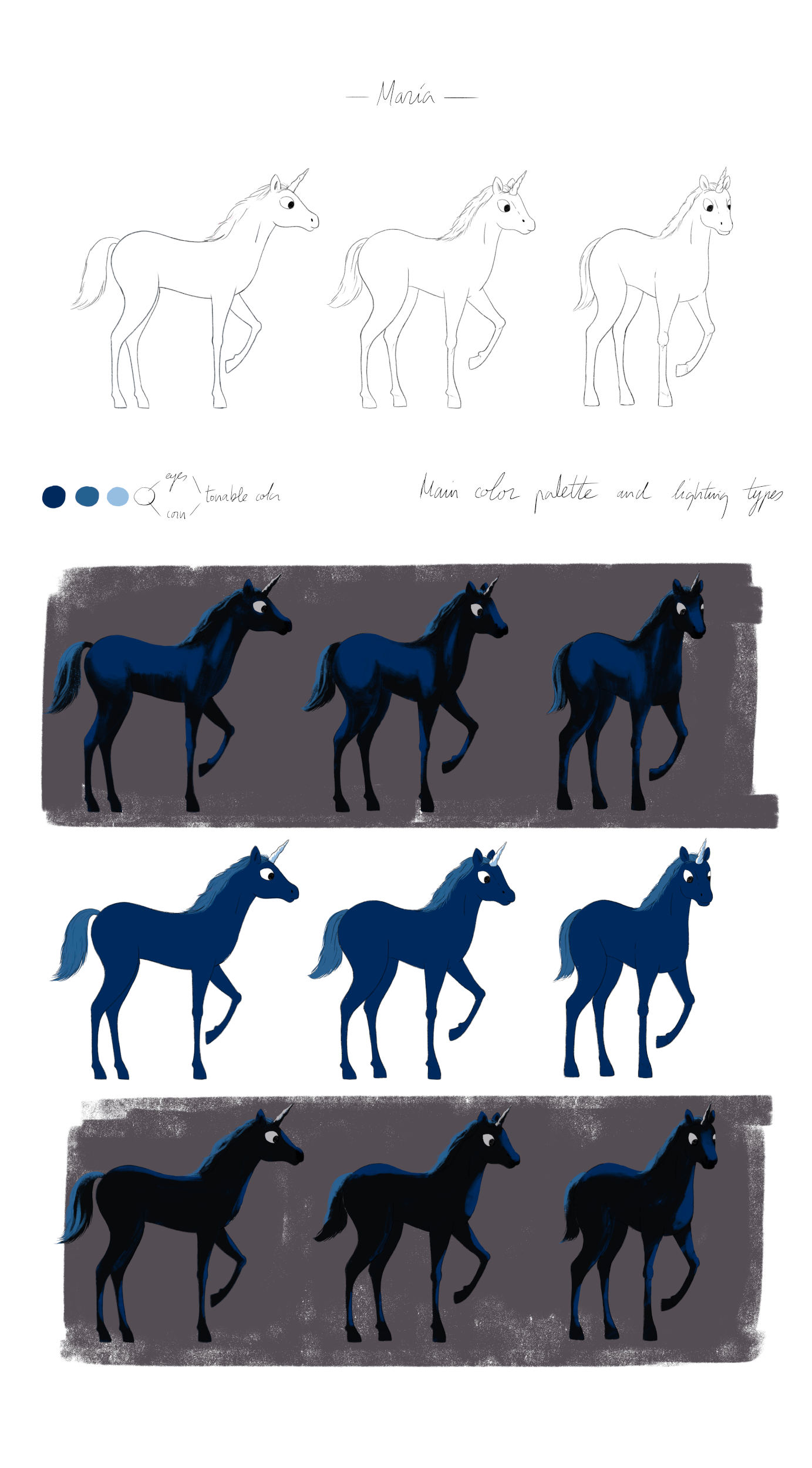
Other scenes in the film required extended technological parameters. As they creep through an enchanted forest, teddy bear soldiers trip out on centipede juices, causing the entire visual palette of the film to shift. Vásquez explained, “This is the only scene in the film that was colored in Photoshop in a very traditional way, frame by frame, to add textures and brushes that we didn’t have in Blender.” Blender proved helpful for more densely populated scenes. According to Vázquez, “It is not easy to animate 12 horses running towards the camera, so we used Blender Grease Pencil and created the unicorns in 3d, which interacted with traditional 2d animated bears in the same shot.” The way the film blends 2d and 3d aspects in a mid-budget production, in this case roughly 3 million euros ($3.6 million), is one of Unicorn Wars’ most impressive achievements.
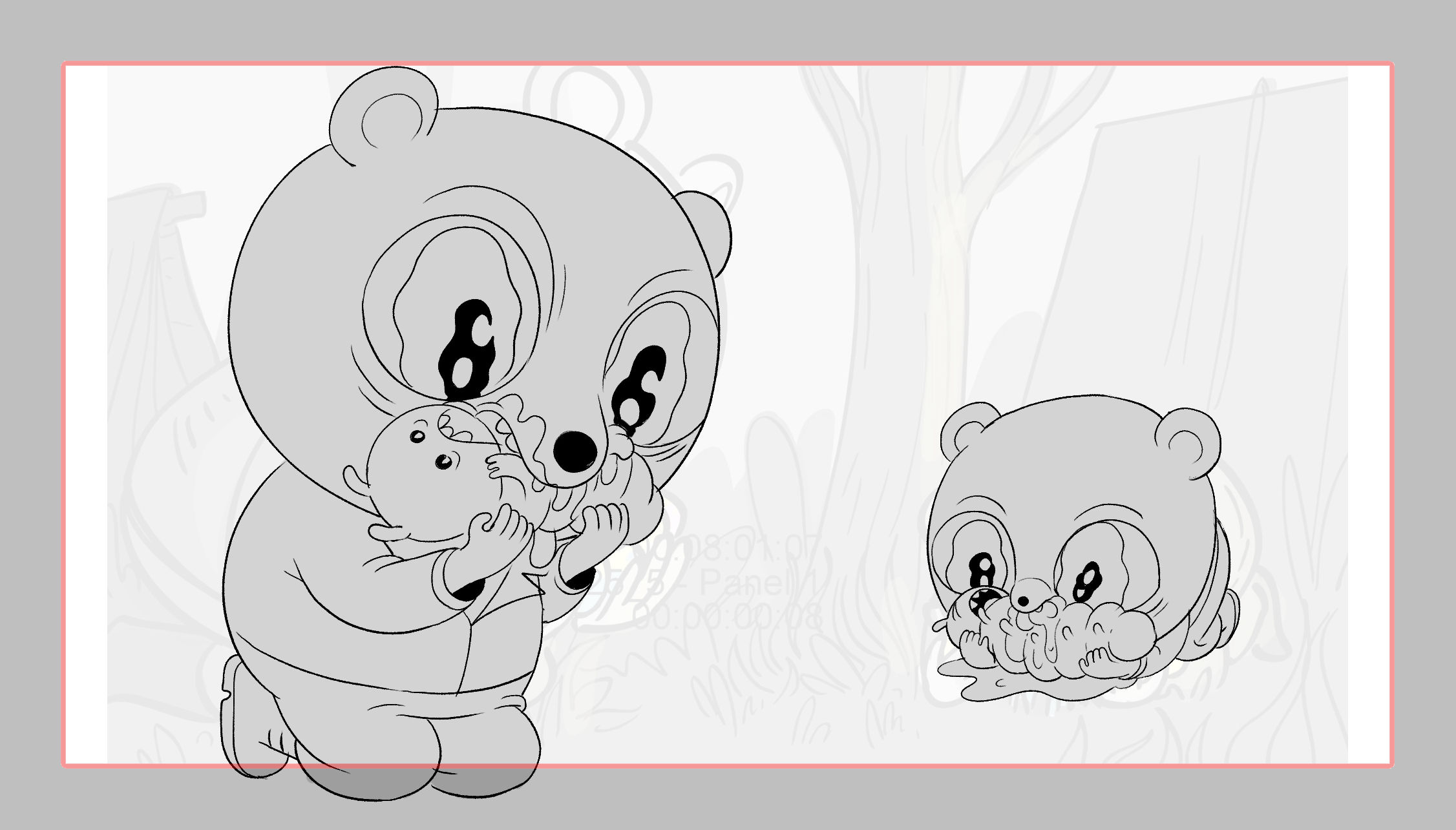

For Vázquez, traditional animation techniques are his favorite because they endure the test of time. “Traditional animation ages well and will always be relevant,” he explained. “For example, if you watch a film like Bambi from 1942, you can see how the art and the storytelling still holds up over time. On the other hand, if you watch a 3d film from 15 or 20 years ago, you can see that it has not aged as well because the technological changes have been brutal.”
Four Souls of Coyote
Retelling a creation story through the lens of Native American mythology is Four Souls of Coyote. Directed by Hungarian artist Áron Gauder, the film demonstrates how well 2d animation can fit the recounting of legends. We see a creator paint the land around him, making creatures and a world of peace, which Coyote, a representation of evil, slowly corrupts. The ancient nature of the story informed how Gauder designed his human and animal characters.
“I wanted them to look a little bit like totem poles, like wood carvings, because they are demi-gods or the first versions of the animals,” Gauder explained. “I wanted them to be big and strong and look like cave paintings and definitely not cute like in Disney movies.”
“The sketchy contours are important for me, and in 3d, you don’t have that unless you have some special rendering that simulates it,” he went on, emphasizing the need for this story to be told through hand-drawn animation. “In Hungary, the studios are more familiar with 2d. In 3d, so many techy people are involved during the process, from the modeling to the rigging to the animation, that I can’t control it. If we draw, it’s much easier. It’s a shorter path from my imagination to the paper.”
Another tool that helped Gauder get his ideas onto the screen was an animatic of the entire film produced to help find financing. “The animatic was so detailed that you could watch it almost as a movie. That was the best thing because all the animators watched the animatic,” Gauder said, expressing the lack of efficiency in other forms of director-to-animator communication. “If you ask them to read this letter or send them these character plans, and there’s too much information, people don’t read it, or it gets lost somewhere. If you watch the animatic, you know what to do. That was the backbone of the communication.”
Pictured at top: Titian, Unicorn Wars, Four Souls of Coyote

.png)
